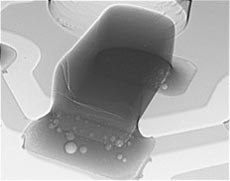Application of X-RAY Detection of Internal Structural Defects in Ceramic Parts
Release time:2024-04-24Publisher:Jeenoce
Ceramic materials are currently widely used, and in the industrial context where precision is important, ceramic components are also commonly used in IGBT insulation, wine bottle containers, and other fields. Moreover, for the application of IGBT, almost all manufacturers attach great importance to product quality, such as whether there are bubbles or defects inside, which directly leads to many enterprises willing to invest heavily in improving quality control technology. JEENOCE will talk about the practical application of X-RAY in ceramic components.

1、 Overview
X-RAY testing is a widely used technique for non-destructive testing of materials, particularly suitable for ceramic components. Through X-ray testing, non-destructive testing can be carried out on the internal structure, defects, density distribution, etc. of ceramic parts, providing important basis for product quality control, production process optimization, etc.
2、 X-RAY detection principle
X-RAY is a high-frequency electromagnetic wave with a wavelength between 0.01 and 10 nanometers. When X-RAY passes through matter, its energy is attenuated by the influence of the atomic structure of the matter. Different substances have different absorption abilities for X-RAY, so the internal structure and properties of substances can be inferred by measuring the intensity of X-RAY after passing through the substance.
For ceramic components, their internal structure is usually relatively uniform, but there may be defects such as pores, cracks, and impurities. These defects will affect the propagation of X-RAY, so the strength of X-RAY after passing through ceramic parts can be measured to infer whether there are defects inside the ceramic parts, as well as the type and size of the defects.
3、 X-RAY detection equipment
X-RAY detection equipment usually consists of X-RAY sources, detectors, control systems, and other components. Among them, the X-RAY source is the equipment that generates X-RAY, usually using radioactive isotopes or electron accelerators as energy sources; A detector is a device that receives X-RAY, usually using scintillation crystals or semiconductor detectors; A control system is a device that controls the entire detection process, including functions such as data acquisition, processing, and display.
4、 Application of X-RAY in detecting ceramic parts
1. Quality control: Through X-RAY testing, quality issues during the production process of ceramic parts can be detected in a timely manner, such as pores, cracks, impurities, etc., to prevent defective products from entering the market.
2. Production process optimization: By conducting X-RAY testing on a large number of ceramic parts, the impact of production processes on product quality can be analyzed, providing a basis for optimizing production processes.
3. Product development: During the product development phase, X-RAY testing can be used to understand the internal structure and properties of new materials, providing important references for the development of new products.
4. Failure analysis: When ceramic components fail, X-RAY testing can be used to understand the cause of failure, providing a basis for improving product design, material selection, production process, etc.
5、 Conclusion
X-RAY testing is a highly effective non-destructive testing method for ceramic components, with advantages such as non-destructive testing, high precision, and high efficiency. Through X-RAY testing, quality issues in the production process of ceramic parts can be detected in a timely manner, production processes can be optimized, and important basis can be provided for product development and failure analysis. With the continuous development of technology, X-RAY testing technology will become more mature and popular, providing more accurate and efficient methods for the inspection and quality control of ceramic parts.

